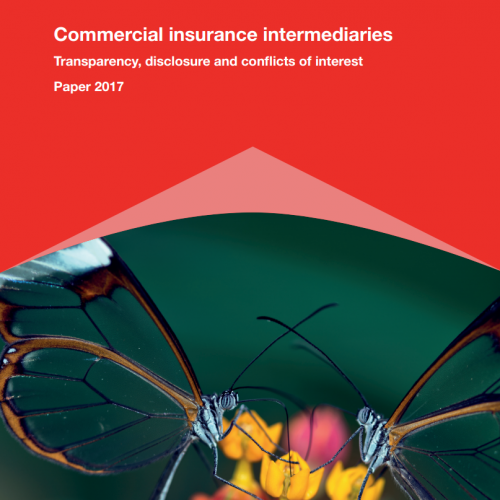Commercial insurance intermediaries
Introduction
Airmic believes that the successful management of potential conflicts of interest within commercial insurance intermediaries can be achieved only through full transparency and disclosure of those conflicts and associated financial interests. Buyers of commercial insurance are entitled to information on how their intermediary is remunerated, what services are being provided, the agency status of the intermediary at various stages of the transaction, how potential conflicts may arise and how those that do arise will be managed. A summary of this information will be outlined in the Terms of Business Agreement (TOBA) and this should be used as a basis of the discussion between the intermediary and the buyer.
Airmic first addressed this in the 2009 paper ‘Transparency, disclosure and conflicts of interest in the commercial insurance market’. This paper summarised the various methods of remuneration for insurance intermediaries and provided a ‘disclosure checklist’ which Airmic members could use to help identify the potential for conflict arising from the range of activities undertaken by their insurance intermediary.
The insurance market is currently facing a period of change. The prevailing soft market places continued pressure on insurance premiums and intermediary fees. Emerging risks and dynamic risk profiles mean buyers are seeking to obtain innovative and relevant cover at the best price. These changes have led intermediaries to take on an increased role, including helping insurers to analyse the changing risks of buyers, develop new solutions and deliver these to customers. They are remunerated for these additional services accordingly. Throughout, insurance buyers expect complete transparency from their intermediary.
This report updates the 2009 guidance, taking into consideration the changing methods of remuneration for insurance intermediaries. Broker conflicts of interest/remuneration models have risen into the top three concerns of Airmic members with regards to the insurance market (Airmic pre-conference survey 2016). Airmic members advise that they are unclear about the growing range of services their intermediary provides to insurance carriers and how they are remunerated for this.
This paper summarises the current main methods of remuneration of insurance intermediaries by insurers and highlights potential conflicts of interest. Additional guidance on how to improve transparency of remuneration and understand how potential conflicts of interest are identified and resolved is given.
Airmic undertook several interviews with Airmic members, intermediaries and insurers when preparing this paper. Airmic is grateful to all those who contributed.
This paper focuses on the remuneration methods for intermediaries operating within the large commercial insurance market. Alternative arrangements may be in place for intermediaries operating within the SME market.
- Fill out an application Our membership manager will assess your eligibility against our criteria.
- Complete your profileIf you are eligible for membership you will be asked to answer a few questions about yourself.
- PaymentYou can make payment online using a card or request an invoice.

